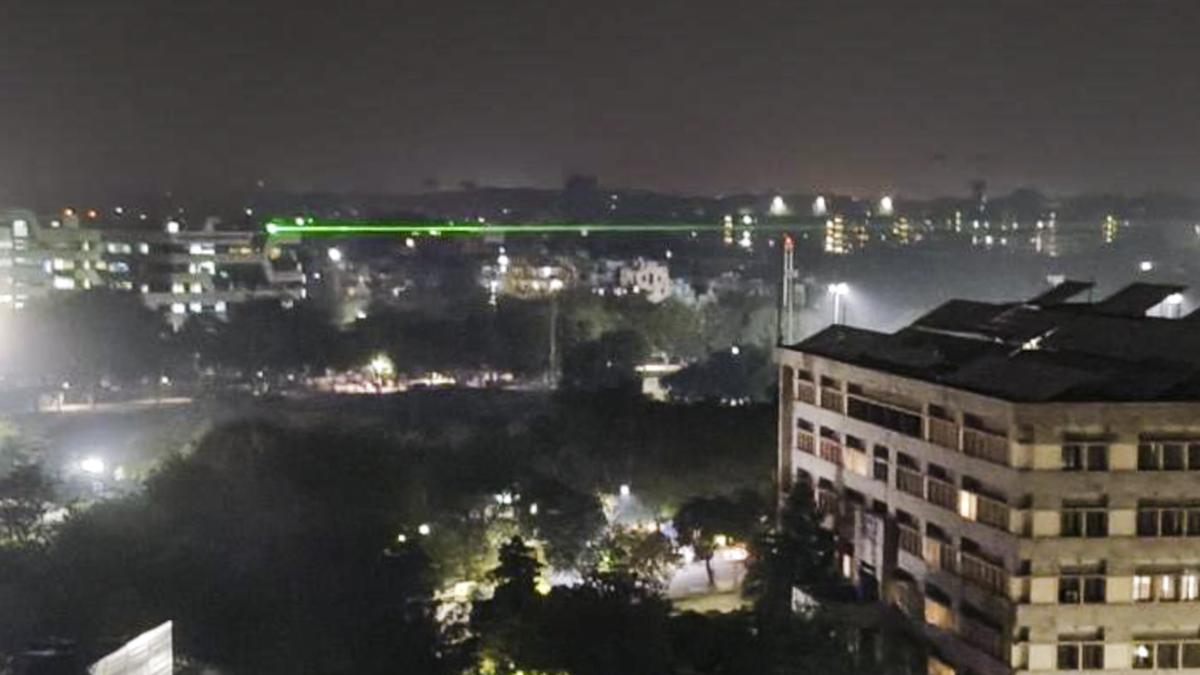India’s Quantum Leap in Secure Communication

- 26 Jun 2025
In News:
Recently, India marked a major milestone in quantum technology with the successful demonstration of quantum secure communication over free space by IIT Delhi, in collaboration with the Defence Research and Development Organisation (DRDO). This achievement represents a significant step forward in India’s pursuit of quantum cybersecurity, quantum networks, and the future quantum internet, with vital applications in both defence and civilian domains.
What is Quantum Communication?
Quantum communication leverages principles of quantum mechanics, particularly quantum entanglement, to enable secure data transmission. In entanglement, the quantum state of two or more particles (usually photons) becomes correlated such that the measurement of one instantly determines the state of the other—regardless of the distance between them.
Security Advantage: Any attempt to intercept or measure the entangled photons disturbs their state, instantly revealing the breach. This makes quantum communication unbreakable by classical computational means.
Quantum Key Distribution (QKD): The Core Mechanism
Quantum communication is often employed for Quantum Key Distribution (QKD)—a method to securely generate and share encryption keys between two parties. Once both parties obtain identical secret keys via QKD, traditional algorithms (like AES) can be used to encrypt and decrypt actual messages.
There are two main types of QKD:
- Prepare-and-Measure QKD: Single photons are prepared in specific states and then measured.
- Entanglement-Based QKD: Pairs of entangled photons are distributed between users; any interception disturbs the entanglement, flagging the intrusion.
IIT-Delhi’s 2025 Breakthrough: Key Highlights
- Achievement: Demonstrated entanglement-assisted free-space QKD over a distance of more than 1 km at IIT Delhi campus.
- Secure Key Rate: ~240 bits per second.
- Quantum Bit Error Rate (QBER): <7%, which is acceptable under current protocols.
- Setting: Conducted under the DRDO-funded project “Design and development of photonic technologies for free space QKD”, in the presence of senior dignitaries from DRDO and IIT Delhi.
Free-space QKD offers a critical advantage—eliminating the need for laying optical fibres, making it viable in mountainous terrain and congested urban zones.
Previous Achievements by the IIT-Delhi & DRDO Team
- 2022: India’s first intercity quantum communication link established between Vindhyachal and Prayagraj using commercial dark optical fibre.
- 2023: Achieved QKD over 380 km using optical fibre with a QBER of 1.48%.
- 2024: Demonstrated entanglement-based QKD over 100 km using telecom-grade optical fibre.
Significance:
Strategic Applications:
- Defence Communication: Enables tamper-proof messaging and data sharing during operations.
- Cybersecurity: Shields critical infrastructure from quantum and AI-based cyber threats.
- Surveillance Immunity: Makes quantum networks resilient to conventional hacking or surveillance.
Civilian Applications:
- Banking and Finance: Secure real-time financial data transmission.
- Telecommunications: Enhances privacy in communication systems.
- Quantum Internet: Enables ultra-secure networking, distributed quantum computing, and time-synchronised communication.
Quantum Networks and the Road Ahead
India’s long-term goal is to establish a multi-node quantum network capable of secure long-range communication. This includes establishing:
- Satellite-to-ground QKD links, enabling nation-wide secure key distribution.
- Urban quantum networks, ensuring secure communication for government and military hubs.
India is drawing inspiration from China’s 4,600 km quantum network and U.S. plans for a quantum internet by the 2030s.
To this end, the National Quantum Mission (NQM) was approved in 2023, with an outlay of ?6,000 crore (2023–2031). It aims to:
- Develop 20–50 qubit quantum computers.
- Build quantum communication and sensing technologies.
- Establish four Thematic Hubs on quantum applications in computing, metrology, communication, and materials.
Institutional Mechanism: DIA-CoEs
The work was conducted under the DRDO-Industry-Academia Centre of Excellence (DIA-CoE) model. DIA-CoEs are collaborative platforms set up in premier academic institutions such as IITs and IISc, focused on developing cutting-edge defence technologies.
There are 15 DIA-CoEs currently operational across India.
Conclusion: India’s Quantum Communication Trajectory
India’s demonstration of free-space quantum secure communication marks a critical leap in strategic technology self-reliance. With continued support through the National Quantum Mission and institutional synergy between academia, industry, and the military, India is well-positioned to emerge as a global leader in quantum-enabled security infrastructure.
